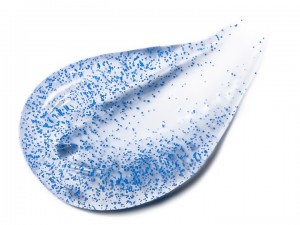 Scientists, environmentalists, business leaders and politicians often find themselves on opposing sides of important issues. Witness the ongoing debate over climate change, or the sugar versus high-fructose corn syrup kerfuffle. So it’s pretty amazing that late last year Congress quietly and placidly passed a piece of legislation supported by environmentalists and scientists alike. The law will significantly change how cosmetics and personal care-product manufacturers do business — and industry leaders went along with it.
Scientists, environmentalists, business leaders and politicians often find themselves on opposing sides of important issues. Witness the ongoing debate over climate change, or the sugar versus high-fructose corn syrup kerfuffle. So it’s pretty amazing that late last year Congress quietly and placidly passed a piece of legislation supported by environmentalists and scientists alike. The law will significantly change how cosmetics and personal care-product manufacturers do business — and industry leaders went along with it.
We’re talking about the banning of plastic microbeads — defined by law as plastic particles of 5mm or less in size — in cosmetics and personal care products. President Obama signed the bill into law on Dec. 28, 2015, after it sailed through both the House and Senate. As of July 1, 2017, it will be illegal to make plastic microbeads and to use them as ingredients in cosmetics or personal care products made in the U.S. Starting July 1, 2018, it will also be illegal to sell such products made with microbeads, regardless of where they’ve been manufactured.
Several states had already passed similar laws or were in the process of passing them, so the federal law isn’t coming out of left field; precedent exists. What makes the easy passage of these laws truly amazing is just how ubiquitous plastic microbeads currently are in the U.S.
The tiny pieces of polyethylene or polypropylene show up in toothpastes, body and face cleansers, and some hand creams — all things that frequently get washed off our bodies when we shower. When that happens, all those little microbeads go down the drain. Current wastewater treatment processes are unable to filter out those miniscule pieces of plastic, and they’re winding up in waterways where marine animals eat them. According to a study published in Environmental Science & Technology, more than 8 trillion microbeads enter waterways every day, CNN reported.
That’s bad for Mother Earth, environmentalists and scientists agree, and some posit health risks if the microbeads linger inside your body. At least one dental hygienist has said she can tell what kind of toothpaste her patients use when she finds microbeads stuck in their teeth and gums!
For the most part, makers of cosmetics and personal care products have gone along with the change. Many manufacturers voluntarily decided to eliminate microbeads from their products. Why the lack of resistance? First, everyone agrees that getting rid of microbeads will reduce the amount of particulate plastic in waterways.
“… Our member companies take very seriously their role as environmental stewards of their products,” Lezlee Westine, president and CEO of the Personal Care Products Council, said in a press release last December. “As a result, companies have voluntarily committed to replace solid plastic microbeads.”
Second, the ban applies only to cosmetic and personal care products, and manufacturers have plenty of non-plastic ingredient alternatives that can help their products achieve the same effects the microbeads did. For example, ground olive or grape seeds can impart an exfoliating effect to personal care products, and these options, of course, are much more eco-friendly.
When Illinois adopted a microbead ban back in 2014, the availability of substitute ingredients was a factor in the cooperation from industry players, Mark Biel of the Chemical Industry Council of Illinois told CBS News. “I just concluded that maybe this was one of those issues where it would be smart to try to work something out.”
Still, for all the apparent unanimity, some questions remain unanswered. A 5mm “microbead” is actually a comparitively large piece of plastic. The microbeads that have been used in cosmetics and personal products tend to be much smaller. However, microbeads have other applications; they’re commonly used in manufacturing processes, scientific testing, to enhance lubricants, as visual markers in biotechnology, and for magnetic or conductive properties in some electronic devices. How might banning microbeads from cosmetics and personal care products affect the plastics industry that produces all microbeads, even those used for other purposes? Finally, how will regulators ensure the safety of the ingredients cosmetics and personal care product makers use to replace the banned microbeads?
When it comes to the meeting of science, the environment and politics, no issue is ever simple, no matter how small it seems to the naked eye.
